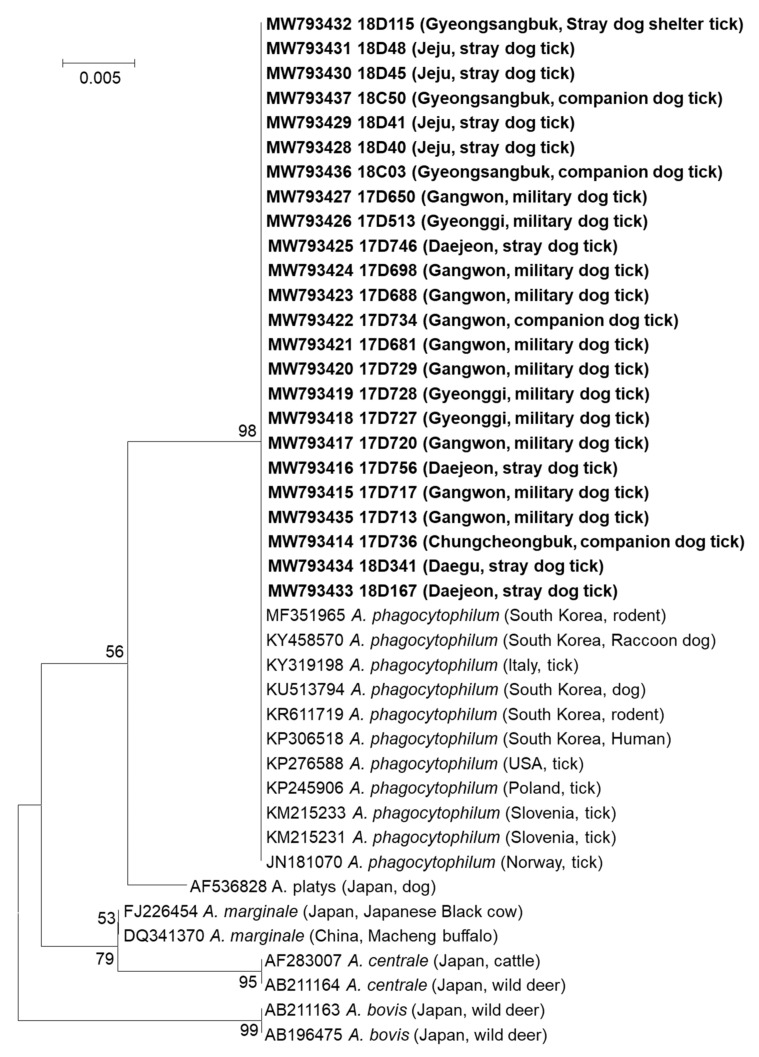Figure 4.
The phylogenetic analysis of Anaplasma spp. detected in ticks collected from dogs in the ROK. The maximum-likelihood tree was created based on the nucleotide sequences of 16S RNA (511 bp) of Anaplasma spp. detected in this study and other countries. MEGA7 software with 1000 bootstrap replications was used to create the phylogenetic tree. The NCBI accession numbers and names of the Anaplasma spp. positive pools are shown in bold. The names of the province or metropolitan city and host of the detected Anaplasma spp. are shown in parentheses. Reference strains of Anaplasma spp. with NCBI accession numbers and country of detection and host are also shown.

